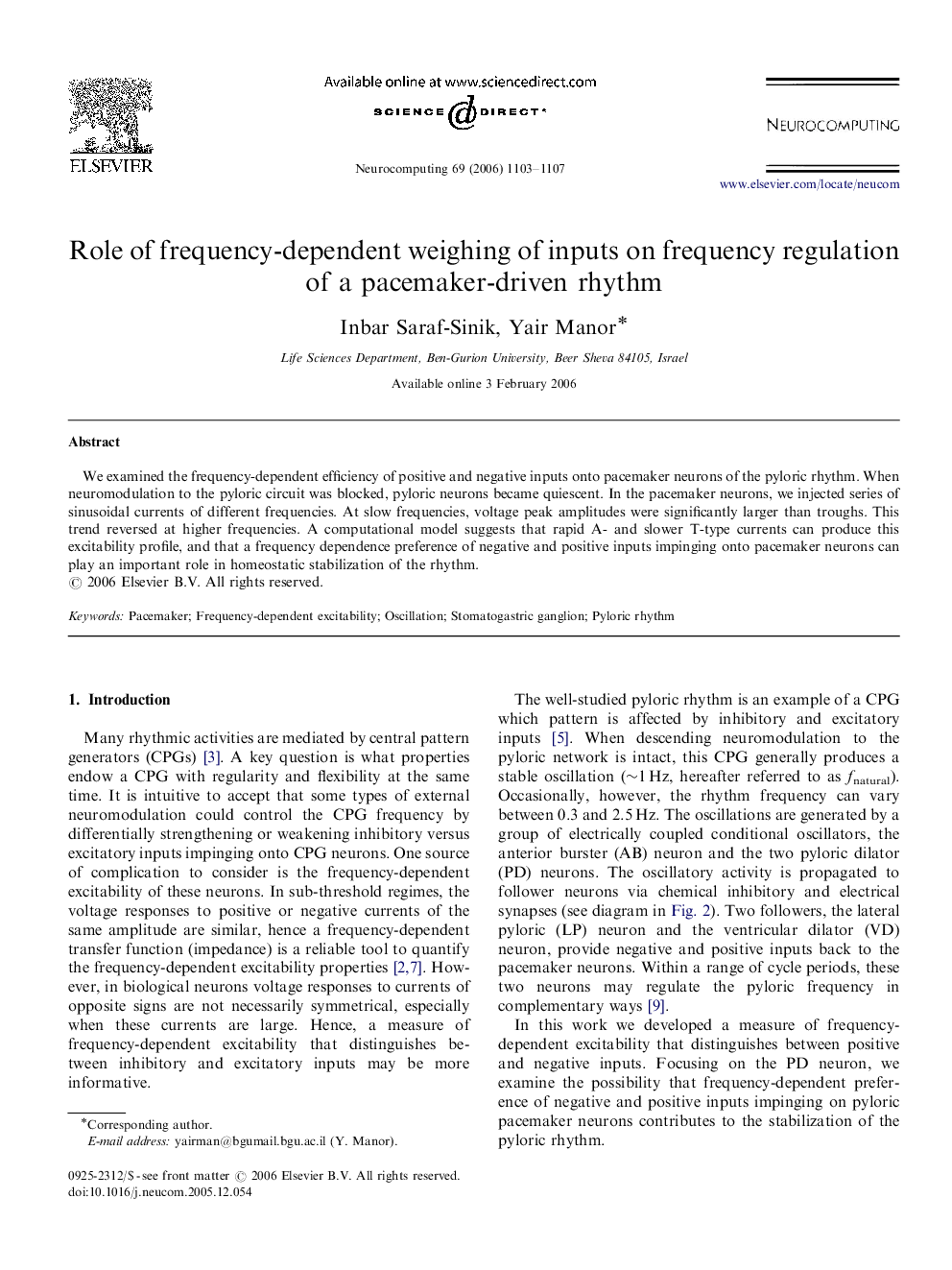| Article ID | Journal | Published Year | Pages | File Type |
|---|---|---|---|---|
| 408718 | Neurocomputing | 2006 | 5 Pages |
Abstract
We examined the frequency-dependent efficiency of positive and negative inputs onto pacemaker neurons of the pyloric rhythm. When neuromodulation to the pyloric circuit was blocked, pyloric neurons became quiescent. In the pacemaker neurons, we injected series of sinusoidal currents of different frequencies. At slow frequencies, voltage peak amplitudes were significantly larger than troughs. This trend reversed at higher frequencies. A computational model suggests that rapid A- and slower T-type currents can produce this excitability profile, and that a frequency dependence preference of negative and positive inputs impinging onto pacemaker neurons can play an important role in homeostatic stabilization of the rhythm.
Related Topics
Physical Sciences and Engineering
Computer Science
Artificial Intelligence
Authors
Inbar Saraf-Sinik, Yair Manor,
